Introduction: Why Photo Prompts Matter — and Why You Can Master Them
Photos and visual prompts are everywhere in AP exams that ask you to analyze, interpret, or build an argument. Whether you’re facing an AP English Language synthesis that includes an editorial photograph, an AP Art History question on iconography, or a free-response prompt that asks for evidence based on an image, the skill set is the same: observe carefully, ask purposeful questions, and turn visual details into persuasive, evidence-driven writing.
This blog walks you through a practical, human-centered approach to handling visual prompts: from first impressions to polished paragraphs. You’ll find strategies, checklists, and a sample walkthrough. Along the way I’ll show how a structured plan — and occasional expert support, like Sparkl’s personalized tutoring — can speed your progress without turning you into a robot.
How Examiners Read Visual Responses
Before we dig into methods, it helps to understand what graders look for. AP graders want clear interpretation anchored in evidence. They’re not just counting clever ideas — they want demonstration that you can justify claims by tying them directly to what you see in the image and to larger concepts (context, rhetorical purpose, historical significance, or composition). In short: claim + evidence + reasoning.
Three habits graders reward
- Specificity: References to concrete visual details (color, framing, gesture, lighting, spatial relations) are persuasive.
- Context: Interpreting the image in relation to time, place, or the prompt’s theme shows depth.
- Coherent structure: Clear topic sentences and logical paragraphing make your analysis easy to follow.
A Step-by-Step Routine for Any Photo Prompt
Adopt a repeatable routine. With practice it becomes fast and intuitive — even under time pressure.
Step 1 — Slow Look (30–60 seconds)
Resist the urge to write immediately. Take a slow, disciplined look. Scan the image from top to bottom, left to right. Note the obvious and the quiet details. In test conditions, write a short list of five things you notice: people, objects, setting, action, and color/lighting.
Step 2 — Ask Targeted Questions (1–2 minutes)
Turn observation into inquiry. Ask: Who is shown? What are they doing? What time and place does this suggest? What mood does the lighting create? What is emphasized by scale or framing? What might the photographer’s purpose be?
Step 3 — Anchor with a Claim (1 minute)
From your notes, form one clear, defensible thesis. Example: “The photograph critiques consumer culture by juxtaposing bright product packaging with the exhausted expressions of shoppers.” The claim should be narrow enough to support within the time limit.
Step 4 — Build Evidence Paragraphs (12–18 minutes)
Structure each paragraph like this: topic sentence → two specific details from the image → interpretation explaining how the details support the claim → brief connection to broader context or the prompt.
Step 5 — Conclude Smartly (1–2 minutes)
Wrap up by restating the claim succinctly and adding a final insight that connects back to the prompt’s focus — rhetorical effect, historical relevance, or ethical implication.
Checklist: What to Notice in a Photo Prompt
Use this quick checklist during practice and on test day to ensure you don’t miss meaningful details.
- Subject(s): age, gender, posture, activity
- Setting: indoors/outdoors, urban/rural, era markers (cars, clothing)
- Composition: foreground/midground/background relationships
- Framing and focus: what’s emphasized or cropped out
- Color and lighting: warm/cool, high contrast vs. muted
- Symbols and objects: brands, signs, props
- Temporal clues: motion blur, stillness, signs of time
- Emotional tone: humor, sadness, irony, solemnity
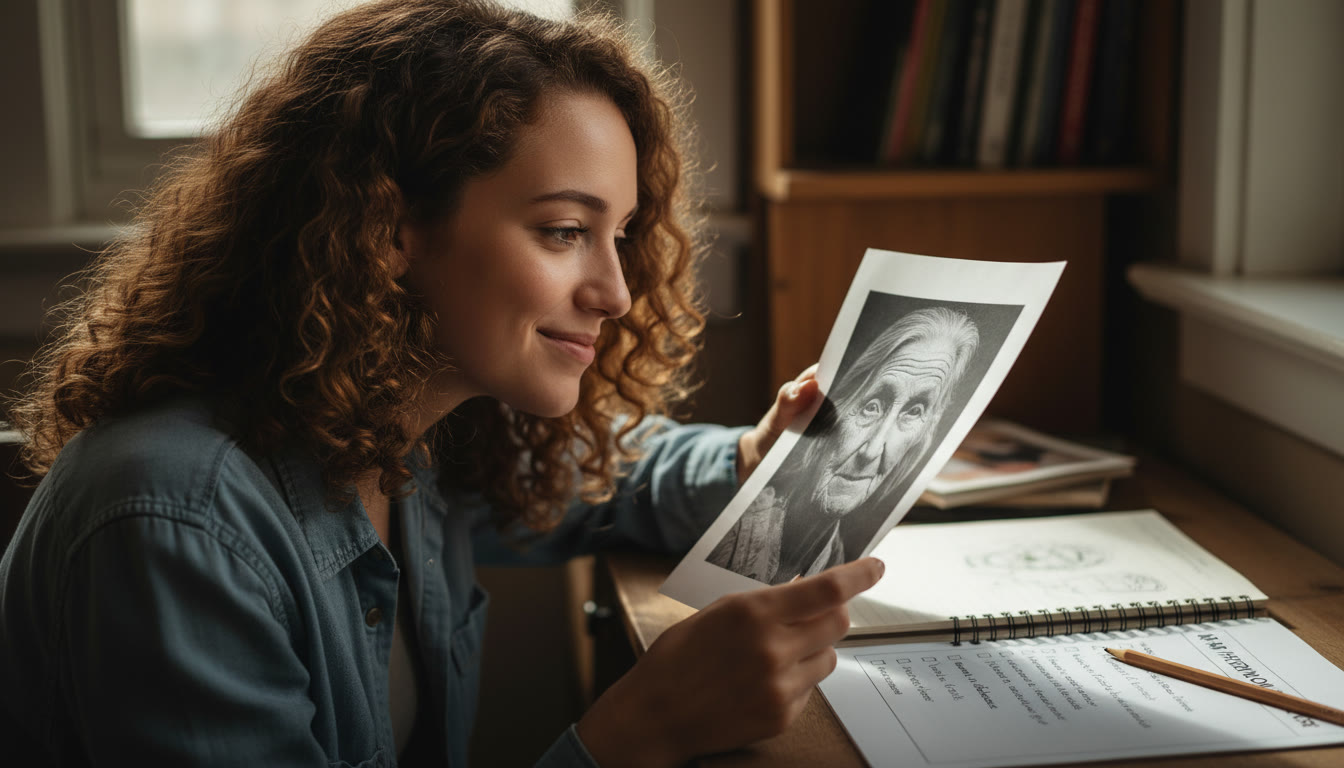
Translating Visual Details into Rhetorical Moves
Visual analysis isn’t just cataloguing; it’s explaining effect. Below are common visual features and how they can function as rhetorical tools.
| Visual Element | Possible Rhetorical Meaning | How to Explain It |
|---|---|---|
| Close-up | Intimacy or emotional focus | Describe what the close-up isolates and argue why that isolation intensifies a reader’s connection. |
| Wide shot | Context, scale, environment | Explain what the surrounding details reveal about social or historical setting. |
| High contrast lighting | Drama, moral clarity, or tension | Connect contrast to symbolic meanings (e.g., hope vs. despair). |
| Color saturation | Emphasis, realism, nostalgia | Note which colors dominate and what feelings they commonly evoke. |
| Off-center composition | Unease, imbalance, emphasis on negative space | Explain how placement draws attention to relationships between elements. |
A Full Walkthrough Example: From Prompt to Paragraphs
Let’s work through a condensed example. Imagine the AP prompt supplies a black-and-white photograph of a busy subway platform where a single elderly woman sits apart from a crowd whose faces are mostly blurred by motion.
Step A — Observations
- Elderly woman seated at center foreground, steady gaze.
- Crowd moving around her is blurred; they face away or are in motion.
- High contrast black-and-white; wet pavement reflecting light.
- Subway signage visible but not legible; clocks show time but not clear hands.
Step B — Thesis
Example thesis: “The photograph uses isolation, motion blur, and stark black-and-white contrast to comment on urban loneliness amid the bustle of modern life.”
Step C — Paragraph 1 (Isolation)
Topic sentence: The photographer positions the elderly woman as a still focal point to emphasize social isolation. Evidence: her seated posture and clear focus versus blurred passersby. Interpretation: while the crowd’s motion implies connectivity through shared space, the sharp, unmoving figure suggests emotional disconnection. Link to prompt: This contrast addresses the prompt’s question about the human cost of urban speed.
Step D — Paragraph 2 (Motion Blur and Time)
Topic sentence: Motion blur transforms the crowd into an indistinct mass, signifying anonymity. Evidence: blurred faces and indistinct shapes; signage is legible only as pattern. Interpretation: Today’s cities accelerate interactions but can erase individual stories — a claim supported by how the photograph visually collapses distinct identities into motion. Context: Considering historical photographic traditions, the image echoes documentary approaches that demand empathy for marginalized figures.
Step E — Conclusion
Restate: By contrasting stillness with motion and employing high-contrast monochrome, the image delivers a quiet indictment of modern urban life. Final insight: Rather than offering a hopeful resolution, the photograph asks the viewer to pause and notice those who might otherwise be invisible.
Practice Drills to Build Fluency
Practice is the only way this process becomes automatic. Try these drills weekly.
- Daily 5-minute slow-looks: Pick a photo, list five observations, write a 75-word interpretation.
- One-paragraph challenges: Convert an observation into a single compact paragraph with claim + evidence + reasoning in 10 minutes.
- Compare and contrast: Take two images on the same theme (e.g., protest crowds) and write a 200-word comparison focusing on compositional differences.
- Timed mocks: Simulate exam conditions once every two weeks using full prompts and strict timing.
Common Mistakes and How to Avoid Them
- Vague descriptions: Replace “people look sad” with “the central figure’s downturned mouth and slumped shoulders create a mood of resignation.”
- Overreliance on speculation: Keep historical or emotional claims tethered to visible evidence. If you must infer motive, label it as plausible interpretation, not fact.
- Ignoring context: If the prompt mentions date, source, or photographer, use that information to strengthen your point.
- Poor structure: Use clear topic sentences so graders can follow your reasoning quickly.
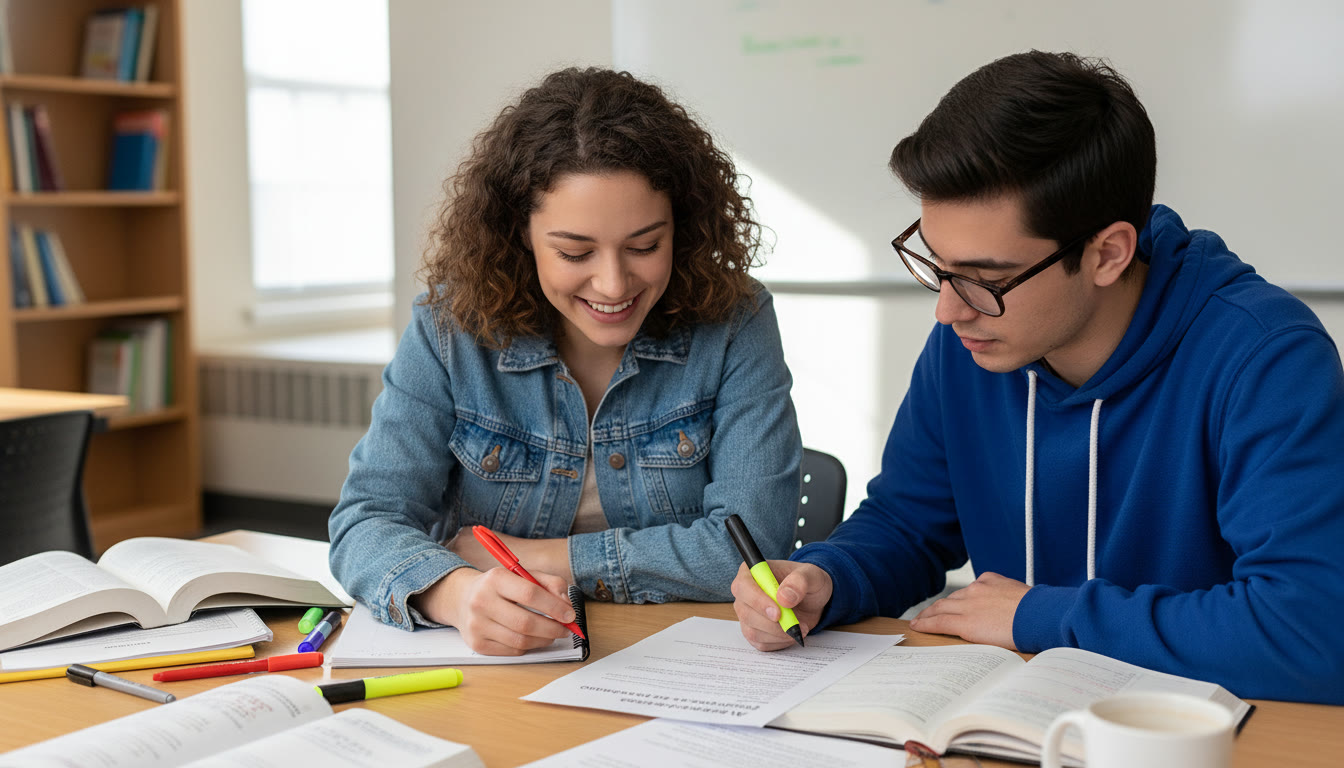
How Targeted Tutoring Accelerates Visual Analysis Skills
Independent practice is essential, but targeted feedback multiplies improvement. One-on-one tutoring can identify blind spots in your observation habits, challenge weak inferences, and help you craft sharper thesis statements. For example, Sparkl’s personalized tutoring pairs students with expert tutors who create tailored study plans, give focused feedback on timed responses, and use AI-driven insights to highlight recurring patterns in a student’s writing.
That sort of guided, evidence-based practice helps you internalize the step-by-step routine we outlined. Tutors can model a think-aloud process while analyzing images, then coach you through the same moves until they’re natural under timed conditions.
Bringing Visual Prompts into Other AP Subjects
Visual literacy isn’t limited to English or Art History. It appears in AP Government (political cartoons), AP Human Geography (maps and spatial data), and AP European History (propaganda posters). The same core skills — careful observation, contextualization, and argumentation — carry across disciplines. When preparing, practice applying the routine with discipline-specific lenses: consider ideology in cartoons, demographic patterns in maps, and symbolism in historical posters.
Scoring Strategies: Make Every Sentence Count
When time is tight, prioritize moves that score. Start with a clear thesis and two strong evidence paragraphs — that combination often achieves the majority of the available points. Use precise language and avoid filler. If you stumble on time, draft a concluding sentence that restates your main claim and adds a concise, high-impact insight: a prediction, ethical reflection, or connection to a broader theme.
Self-Assessment Rubric
After you finish practice responses, use this quick rubric to grade yourself like an AP reader.
- Thesis Clarity (0–3): Is the claim specific and defensible?
- Evidence Use (0–4): Are details from the image cited and explained?
- Reasoning/Analysis (0–4): Does the explanation link evidence to the claim with logic?
- Structure and Style (0–2): Is the response coherent and mostly free of distracting errors?
A total of 12 points or above indicates solid performance in timed conditions; below that, focus practice on the weakest area and consider targeted tutoring to accelerate improvement.
Final Thoughts: From Prompt to Confidence
Working with photo and visual prompts is an invitation to slow down and translate sight into argument. The most successful students combine disciplined routines with reflective practice. Make slow-looking a habit, anchor every claim in the image itself, and practice under timed conditions until the steps are internalized.
If you find persistent trouble — whether that’s asserting a clear thesis or turning visual details into reasoning — consider adding occasional one-on-one sessions. Personalized tutoring, like the tailored plans and expert feedback Sparkl offers, can compact months of progress into weeks by giving you specific, actionable corrections and by modeling strong responses.
At the end of the day, visual prompts reward curiosity. Treat each image as a small mystery: look, ask, claim, and prove. With practice you’ll not only score better on AP exams — you’ll see the world more richly, and that’s a useful skill in college and beyond.
Quick Reference: Two-Minute Routine for Test Day
- 30s: Slow look — list five observations.
- 30s: Turn observations into one sentence thesis.
- 1 min: Outline two evidence paragraphs (topic sentence + two details each).
- Remaining time: Write, review for clarity, and add a concise conclusion.
Parting Encouragement
This skill gets easier with focused practice. Treat each image as an opportunity to sharpen judgment and expression — and remember: clear thinking looks like clear writing. Keep practicing, get feedback when you can, and let the images make you a better observer, thinker, and writer.


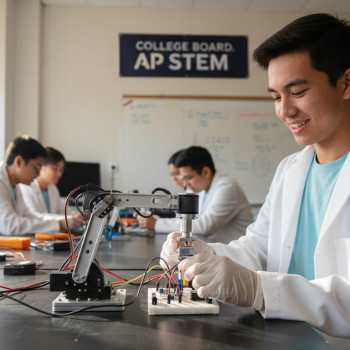

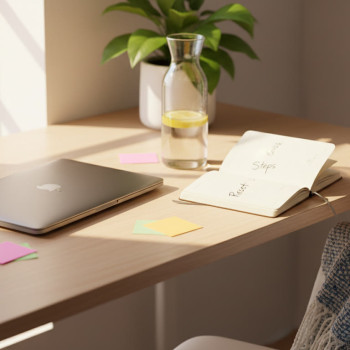
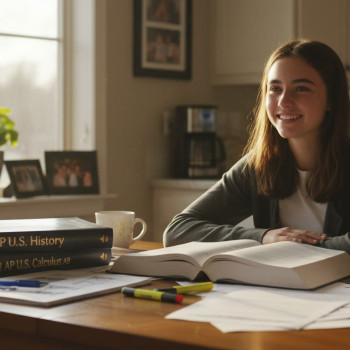

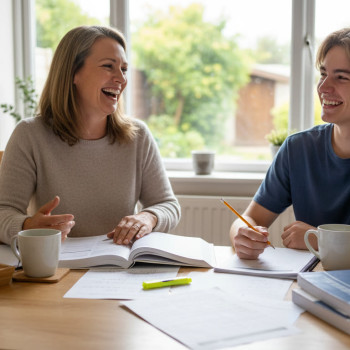









No Comments
Leave a comment Cancel